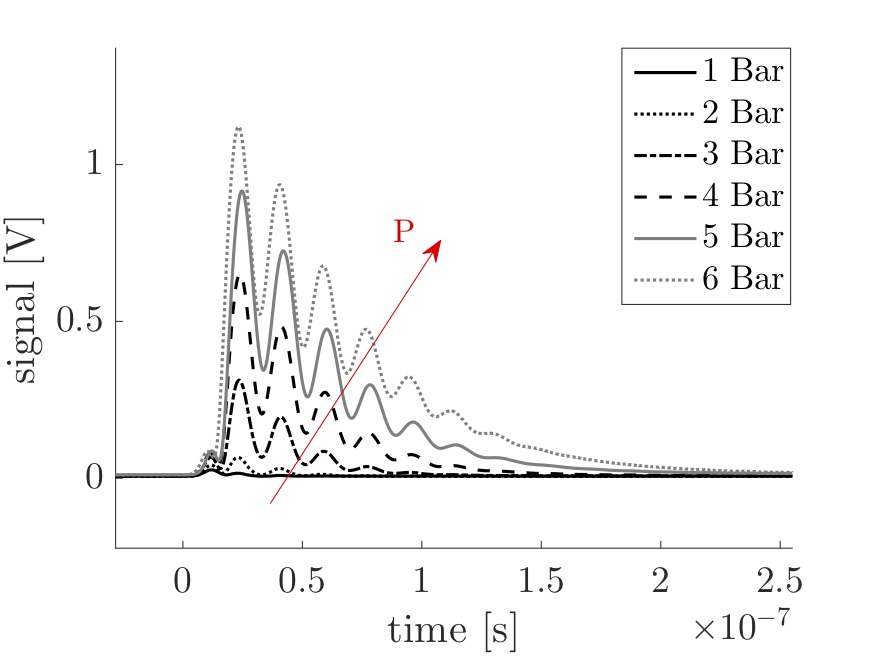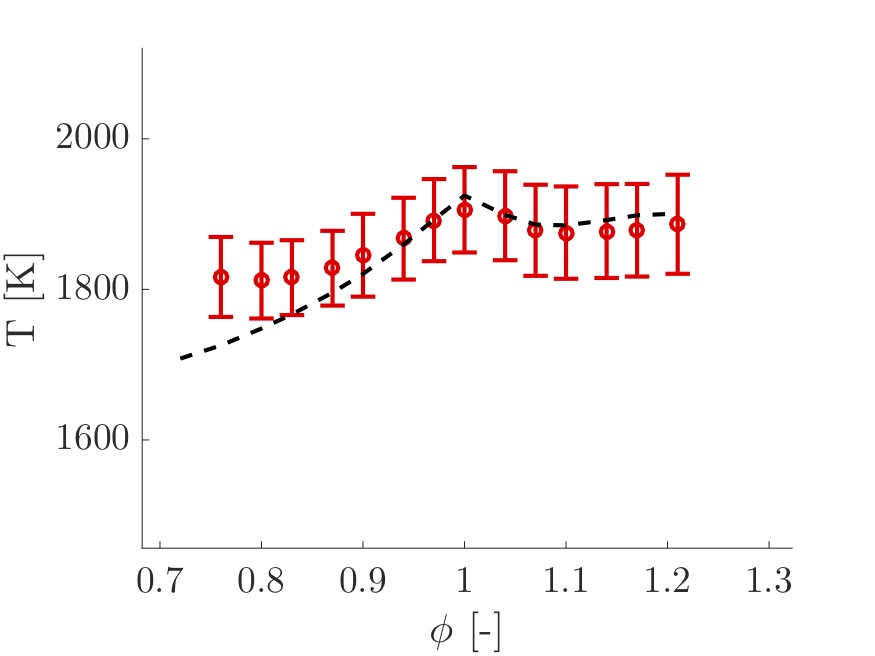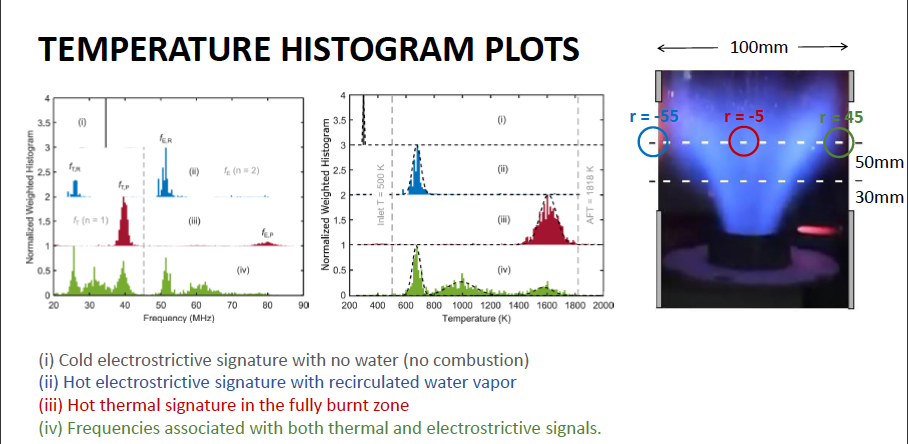LIGS
A new facility has been commissioned for studying Laser Induced Grating Spectroscopy (LIGS) for measurement temperature and water vapour in the presence of soot. The technique uses a pulsed beam at 1064 nm to excite either air or water molecule lines to produce a density grating and an associated pressure pulse. The resulting density pattern is probed using a continuous wave laser.
The technique has been initiated in a previous EPSRC funded (EP/K02924X/1) project, and is currently funded by EPSRC grant EP/T030801/1, in a collaboration with Oxford and Cardiff Universities.
The particular advantages of the 1064 nm LIGS are :
- the very high precision which arises from the measurement of a frequency.
- easily available excitation line with high energies from Nd:YAG lasers
- can be used to excite electrostrictive modes to obtain temperatures in reactants or products
- works with sooty flows
The current version of the technique offers sufficient signal from 3 bar upwards for measurement of product temperatures.

Ringing pattern obtained using LIGS

Temperatures measured using LIGS at KAUST

Temperature histograms from measurements at Cardiff GTRC